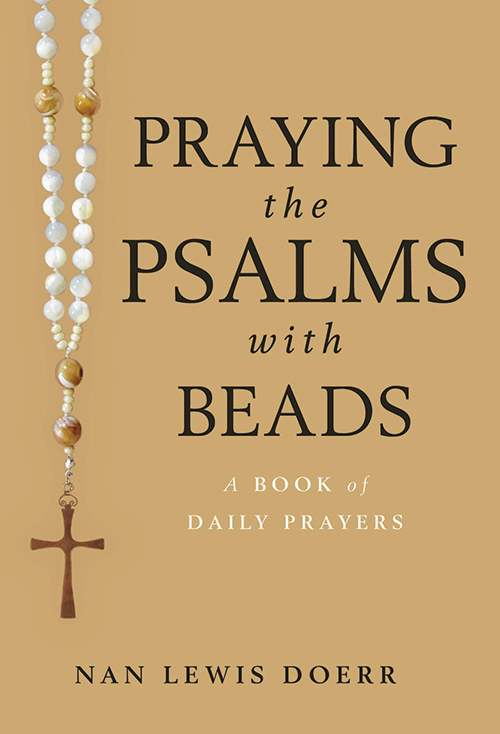
Praying the Psalms with Beads: A Book of Daily Prayers
Reviewed by Ken Jacobsen
March 1, 2021
By Nan Lewis Doerr. Wm. B. Eerdmans Publishing Co., 2020. 223 pages. $15/paperback or eBook.
Nan Lewis Doerr, an Episcopal priest who has served in various parishes and on university campuses over the years in the Diocese of Texas, shares here her discovery of Anglican prayer beads. In a media-filled world inundated with words, how do we pause and listen more deeply to the sacred words of a prayer, in order to be fed and nourished by its meaning? Doerr has found that “praying with her hands”—fingering the beads as she says the words—is a way to slow down and take in the meaning of a prayer.
What are the Anglican (Episcopal) prayer beads? They were developed by Reverend Lynn Bauman in the 1980s. They consist of a small cross attached to a circle of 33 beads (5 large and 28 small). Four of the large beads form a cross on the circle, between each of which are seven smaller beads. The fifth large bead connects the circle to the cross.
The biblical psalms are a gathered expression of many of the deepest human emotions: from dread, despair, and fear to comfort, hope, and joy. What makes them prayers is that all these emotions are brought to the divine altar for healing and wholeness. To pray these psalms, along with so many who have prayed them before through the millennia, is to bring our own deep emotions also to the altar for healing and wholeness.
In Praying the Psalms with Beads, Doerr gives us a new way to pray the psalms, arranging the verses in each of the 150 biblical psalms to correspond to the beads. Saying one psalm takes one fully around the circle, from the cross and back to it. (She divides the longer psalms into two prayings.) I ordered a set of the beads (readily available through various online outlets) to experience this kind of praying. What did I discover?
As I recite a psalm this way—which takes a full five minutes—I find my sense of clock time slowing to the pace of listening: listening to each verse as my primary focus, listening to which words are reaching out and touching me today. For example, when I pray Psalm 28, I begin by touching the small cross: “The Lord is my strength and shield; in God will I trust.” As my fingers pass over each group of seven beads around the circle, I repeat the line seven times (a number symbolizing completion for early Christians, as in the week). With each repetition, I let the words sink deeper, speaking these lines: “Hear the voice of my prayer when I cry out to you, O Lord”; “Hear my prayer O Lord, when I lift up my hands in your holy place”; “Blessed is the Lord who has heard the voice of my prayer”; and “Therefore my heart dances for joy, and I will praise the Lord with song.” As my hands return to the cross at the last verse, I say again, in direct address this time, “O Lord, you are my strength and my shield; in you I will trust always.”
There are many ways to pray. It is said that David would dance. Perhaps in her book Praying the Psalms with Beads, Nan Lewis Doerr is teaching how to “dance with our fingers.” It is good to keep growing and learning how to pray.
Ken Jacobsen has lived and taught in Quaker schools and communities for many years, along with his wife, Katharine. Since her passing in 2017, he carries on this work from their poustinia, a retreat house for sojourners, at their lakeside home in Wisconsin. Ken is a member of Stillwater Meeting in Barnesville, Ohio.


